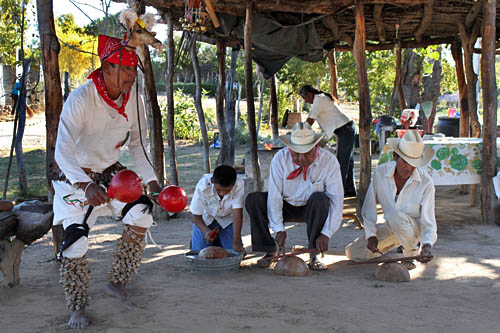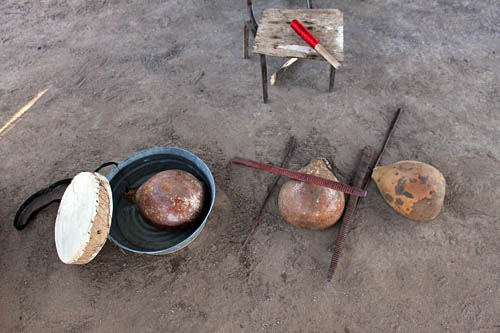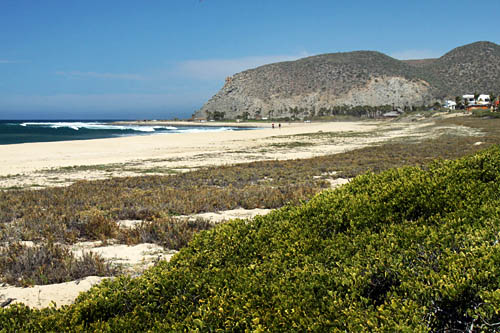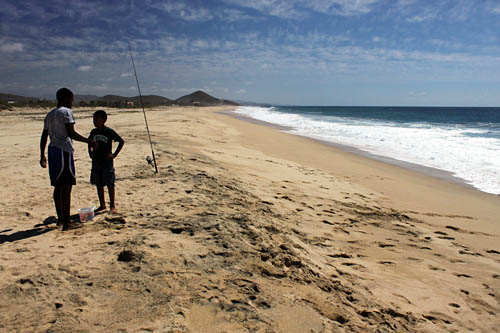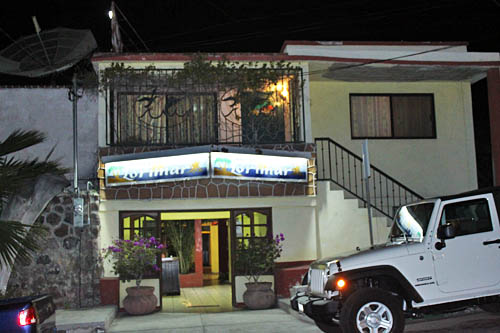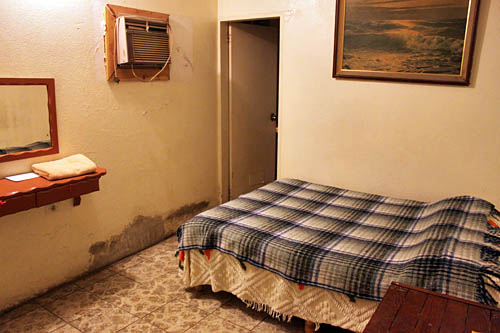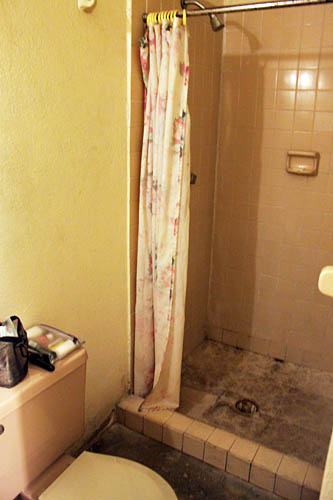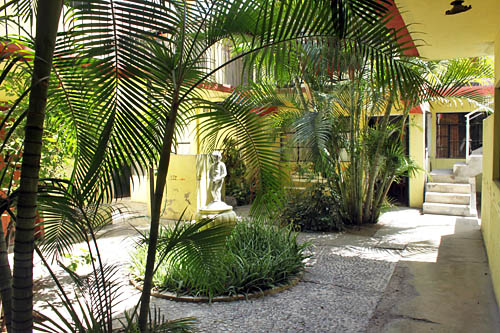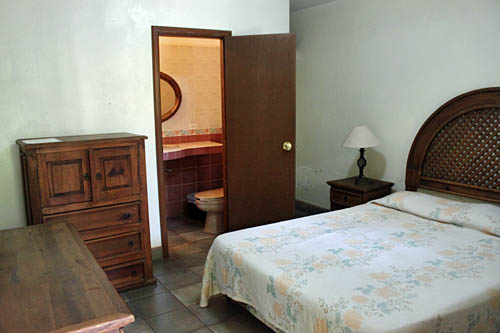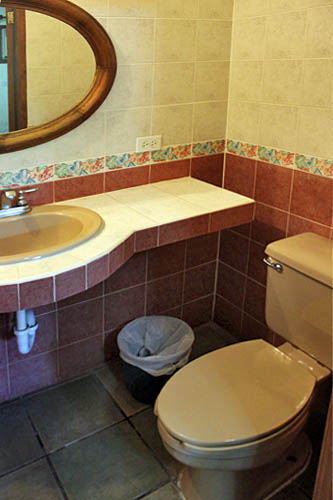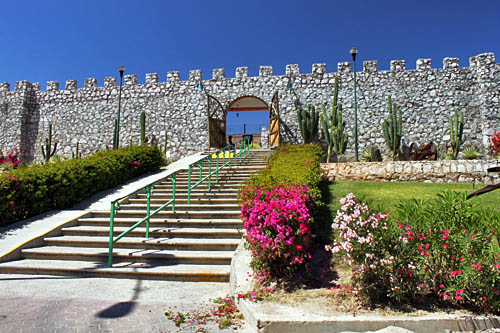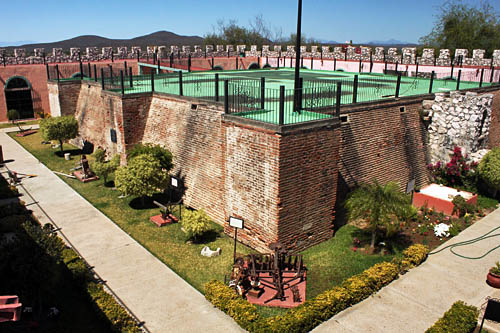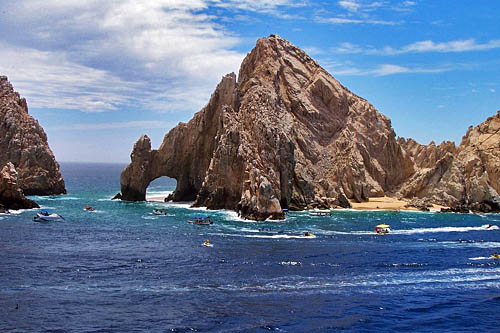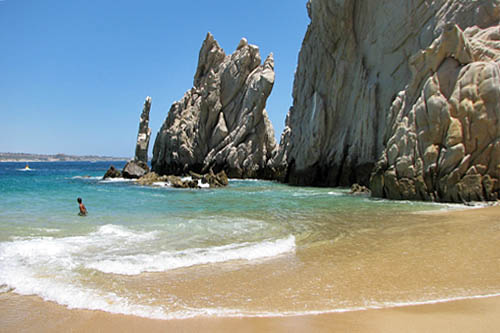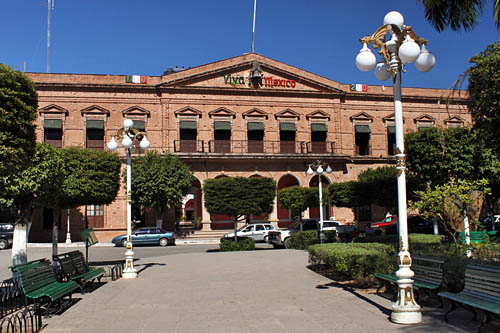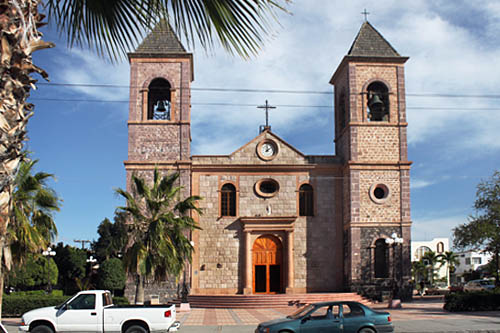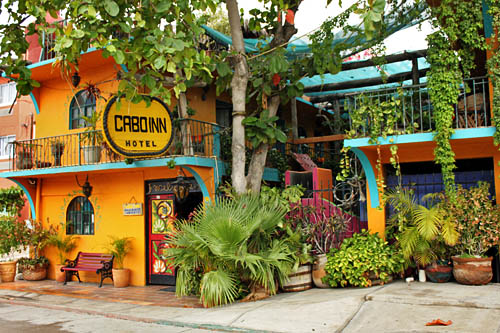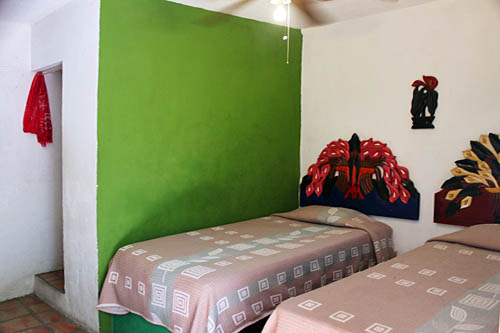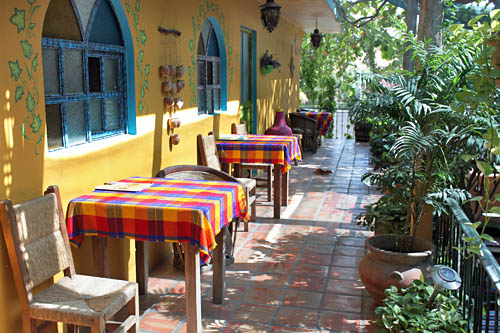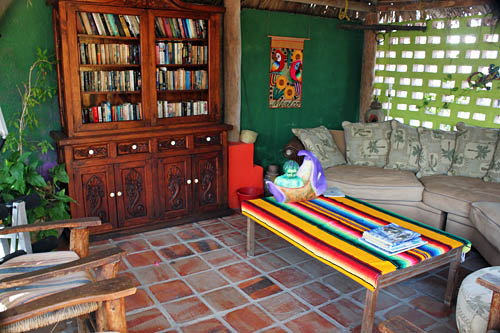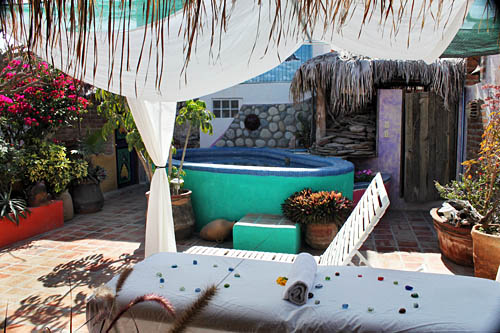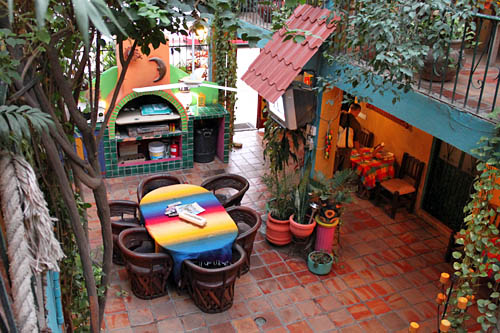Rio Vista Hotel in El Fuerte, Mexico is an Excellent Value
Friday, April 9th, 2010The exquisite colonial era town of El Fuerte, Mexico offers a wide choice of accommodations, but my preference is the Rio Vista Hotel. Built atop the highest hill in town, the Rio Vista turns its back on the hustle and bustle of town, instead offering stunning, tranquil vistas over the El Fuerte River.
I could easily have written a glowing review of the property based solely upon my room, which featured two queen size beds, ample shelves and racks for clothing, an ultra-modern bathroom with tile shower and toilet, and a separate vanity area with a sink constructed of hand-painted Mexican tiles. However owner Chal Gamez was kind enough to provide a tour of all the facilities, including the new wing and terrace that are currently under construction and scheduled to be ready for occupancy in a couple of months.
Both the existing rooms and those in the new wing feature amazing wall murals created by a local artisan, featuring scenes from historic El Fuerte as well as natural landscapes that abound in this part of Mexico. The new wing also faces the river and has a wide terrace furnished with tables and chairs where guests can wind down after a long day of touring and enjoy the sunset.
A second terrace overlooking the river does double duty as an open-air restaurant where breakfast and dinner are served. Not only is the food delicious and economically priced, daily selections incorporate fresh locally grown vegetables and fruit rather than the ubiquitous bean and cheese laden burritos and enchiladas found in most Mexican restaurants.
Gamez also goes out of his way to ensure that guests have a pleasant stay, arranging for tours to the nearby Indian village of Los Capomos to see the indigenous Danza del Venado (Deer Dance), and driving guests to and from the train station (El Fuerte is a major stop on the El Chepe Railroad, which runs through Mexico’s breathtaking Copper Canyon). Best of all, Rio Vista is priced economically at $600 pesos per night ($48 USD), and they accept credit cards.
Photo Credit: Barbara Weibel
Article by Barbara Weibel of Hole In The Donut Travels






